The content of the article
How to care for primrose at home? It’s not difficult at all. You need to follow simple recommendations so that the plant pleases with its flowering. The content of primrose at home is within the power of any beginner. The only warning: keep the pot out of the reach of children and pets. Contact with leaves may cause irritation or dermatitis.
Choose a pot
The capacity for planting primrose should be shallow, but wide. The flower has a voluminous fibrous root system, so it needs a certain amount of space. The group plantings of primroses of different colors look very good in one large planter.
The material of the pot can be any. Clay, plastic, ceramics. Just not glass or metal. These are cold textures, they themselves cool and at the same time cool the roots.
What soil is suitable for primrose
You can buy in the store a ready-made mixture for primrose or geranium. But it is better to make the mixture yourself. For this, peat, clean coarse sand, soddy ground and humus are taken in equal parts. It turns out moderately nutritious, but loose and permeable soil.
Do not forget to disinfect any soil. Because primrose is very susceptible to many fungal diseases. This is done as follows: the mixture is poured into a dense bag, then placed in a freezer for 3 days. After thawing, it is spilled with a strong hot solution of potassium permanganate. After 12 hours, it stains in the oven. The temperature is approximately + 100-105 ° C. After cooling, the soil is ready for planting.
By the way, for home cultivation at the bottom of the pot will have to put a decent layer of drainage. Primrose does not like to swim in excess fluid. The roots immediately choke and begin to rot.
Lighting
It is necessary to place the primrose on any windowsill, except the south. Or in the back of the room, but without fail with additional illumination with fitolamps. If the choice is not worth it and you have to place the pot on the south window, then the plant is surely shaded. Thick tulle, light blinds, plain white paper - any available tool will do.
Tip. On the southern windowsill, you are unlikely to wait for flowers. Primrose needs coolness to form buds.
Content temperature
To successfully enjoy the flowering of primrose, it is necessary to provide it with an ambient temperature of no higher than + 19 ° C. And some varieties grow buds only at + 13 ° С.
At home on the windowsill, in principle, you can create such conditions. To do this, cover the central heating batteries. Or fence the pot from the room, for example, with thick cardboard or glass.
By the way, in houses with wooden frames, you can put a pot with a primrose between them. There is quite a comfortable temperature.
If you have plastic windows, you will either have to close the pots from room heat, or periodically place containers with cold water next to them.
Tip. Freeze water in plastic bottles, and then place next to the pot. The ice will melt and lower the air temperature.
Air humidity
This is a significant enough factor for primrose. Recall the natural vegetation cycle. Early in the spring there is still no rain, but from the melting snow the air around is humid and cool. It is at this time that the plant begins to bloom.
So we need to create similar conditions. It seems to be sorted out with coolness.And how to make high humidity in the microclimate of the windowsill? It is not advisable to spray the plant itself. The leaves are fluffy, spots will remain from the drops. There are several options to choose from:
- Very often, air is sprayed around the plant. Water at room temperature.
- Additional pots of water are placed next to the pot. Moisture evaporates, we get what we need.
- Slices of peat, moss or expanded clay are laid out in a wide pan. All this good is well watered and placed nearby. Water evaporates, air humidity rises.
Do not put these materials on the surface of the soil directly in the pot with primrose to save space. She is very sensitive to such a neighborhood. Immediately begins to hurt, rot, wither away. Do not regret it, select a small piece of windowsill for all the attendants.
Watering primrose
Again, recall the natural environment. Earth in the spring is very wet, but there is no rain yet. So we will water the primrose as well. That is, when drying the topsoil in the pot. But not from above, but by immersion.
To do this, take a container with a diameter slightly larger than the pot with the plant. We put the primrose inside. Pour water at room temperature into a large container so that it is approximately at the level of half a flower pot. We leave for 15 minutes, go about our business. After we return, we take out the primrose from the water. Another 10 minutes allow the excess to drain. And only then we return the pot to its usual habitat.
If you have a certain sleight of hand, then you can try to gently water the soil from above. This is done from a large syringe, a watering can with a thin long nose, and syringes. It is very important to ensure that water falls only on the ground and does not spray on primrose.
Top dressing
Some sources claim that primrose should be fertilized only during the period of bud growth and flowering. Allegedly, the rest of the time the plant does not need additional nutrition. An interesting statement. And what kind of flowering should be expected if primrose does not build up enough green mass?
At home, primrose begins to bloom around December-January. Until this time, it must be fed with a complete complex mineral fertilizer. It should contain a large amount of phosphorus, nitrogen and potassium. The first and last are responsible for the formation of buds, and the second helps to grow good leaves.
Around October-November, it is necessary to reduce top dressing, or even stop them. After the appearance of the buds, they are resumed. But nitrogen is completely excluded. Further, after flowering for about a month, primrose is given a rest. That is, they cease to fertilize again. Well, then again they begin to treat with mineral water in the usual mode. This is approximately 1 time in 14-15 days.
People who grow primrose at home, after flowering, often throw it away. And in vain. Because the plant is perennial, with proper care, it can grow in a room for more than 5 years. You just need to fertilize it properly. Then you don’t have to throw it away.
Pests
Primrose is very fond of many pests. Most often, the plant becomes infected either from other flowers, or during spring planting in the garden. Yes, yes, she feels quite tolerably if she is planted in a flower bed in the summer or a pot is brought out into the street. It was there that her insidious whiteflies, aphids, scale insects, spider mites await her.
The difficulty in removing insects is the fluff on the leaves. In the usual way, you will not wash with household or potash soap. After all, a rag can damage this fluff. Therefore, you will either have to properly bathe the primrose in a soap solution. Naturally, the soil is previously tightly covered. Thick polyethylene, cling film, foil.
Or use any suitable systemic insecticide. Only strictly follow the manufacturer's recommendations and instructions on the package.An overdose is fraught with the death of not only pests, but also the plant itself.
And further. As soon as the first signs of infection appear, immediately transfer the primrose to quarantine. Otherwise, the pests will settle in all other flowers.
Tip. In the case of whiteflies, they will have to destroy the pest for a long time and hard. This is a very annoying creature. A real fight must be waged against it.
Disease
Almost all diseases of primrose arise from a lack of competent care. Often, this is too dry air or a gulf of roots. Primrose is susceptible to many fungal diseases. Therefore, it must often be aired. Periodic treatment with adaptogens helps the plant to fight most types of pathogenic bacteria on its own.
In case of damage, you can try to use fungicides. But it is better to prevent the onset of the disease at all.
How to care for primrose at home? As you can see, everything is very simple. A little will have to take care of the coolness and humidity, and nothing more. And the rest, quite an unpretentious plant. Blossoms safely up to 3 consecutive months and pleases the owners.
Video: how to properly care for primrose

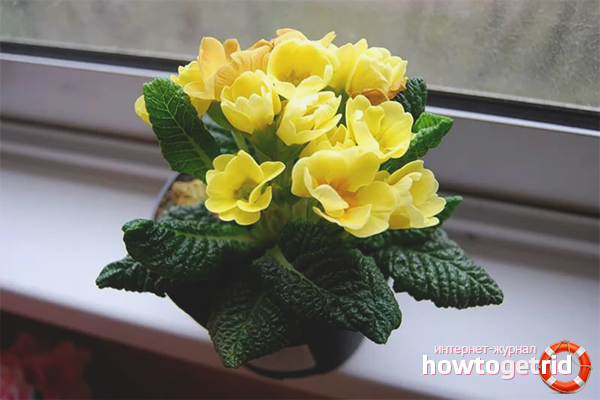
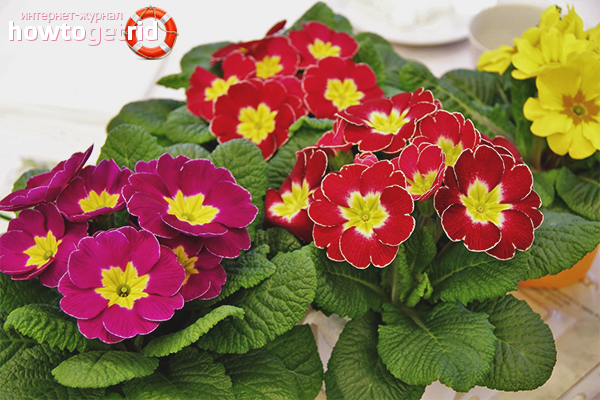
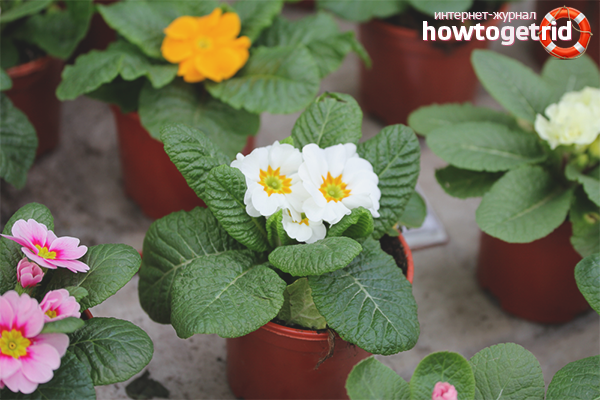


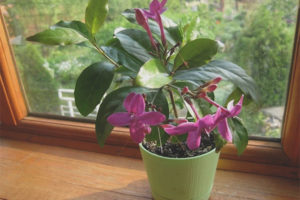


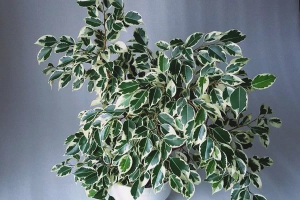

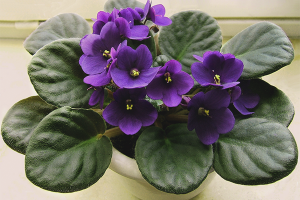
Submit